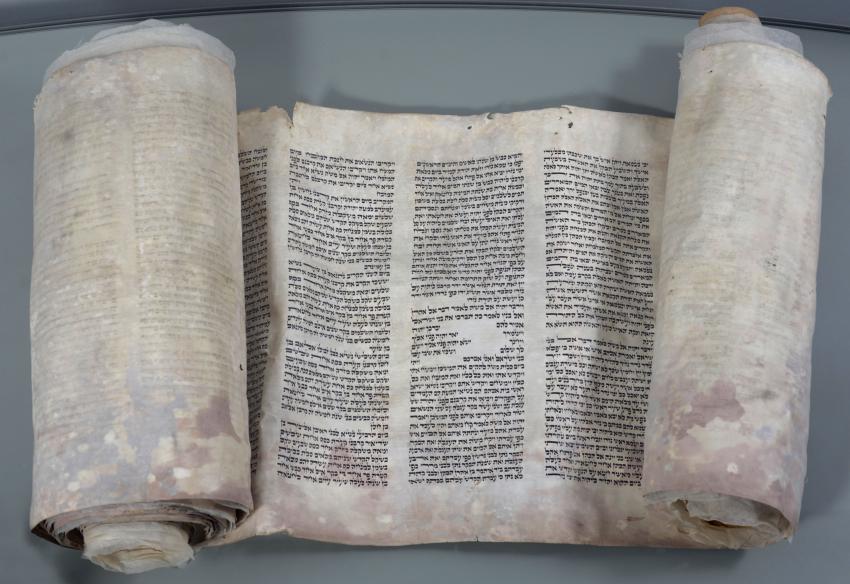The Torah scroll was discovered sixty years after the Nazis carried out organized pogroms throughout Germany and Austria on the night of 9 November 1938. It was brought to Israel and donated to Yad Vashem by the Association of Leipzig Jews in Israel.
The story of the scroll and its rescue unfolded in stages, beginning with the discovery of the scroll in 1998. The library at the University of Leipzig, which had been severely damaged by the Allied bombings, was renovated, exposing Torah scrolls together with a number of Torah scroll staves that had been hidden between the beams of the library roof. Circumstances clearly indicated that the scrolls had been deliberately hidden during the Nazi period. However, not only was there no clue as to who had been responsible for the concealment, it was also unclear from where the scrolls had been taken.
The Torah scrolls were in an advanced stage of decay due to their prolonged stay in damp and humid conditions. The Association of Leipzig Jews in Israel who heard about the discovery contacted the Leipzig community and requested that the one Torah scroll that had been found in relatively reasonable condition be sent to Israel. In accordance with the Jewish custom of burying holy books and unusable scrolls, the others were buried in the Jewish cemetery in Leipzig.
A short time after the story was published in the Association’s bulletin, the office in Tel Aviv received a letter from a Canadian citizen that solved part of the mystery of the hidden scrolls.
In the letter, Isaac Israel explained that his father, Chaim, had told him that on the morning of November 9, 1938, a messenger from the post office came to advise Chaim that there was a call for him at the telephone exchange. When he arrived at the exchange, an anonymous caller from Stuttgart advised the father that violence was planned to take place in every synagogue throughout Germany. He went to his synagogue, the Broder synagogue on Kailestrasse, and a decision was taken to remove a collection of a dozen scrolls from the synagogue and transfer them to a building belonging to the JNF (Jewish National Fund), a building defined as the property of British subjects. One scroll was to remain in the synagogue for prayers.
That very night the pogrom known as Kristallnacht took place, and the synagogues in the city were destroyed by fire. The contents of the synagogue were utterly destroyed and the scroll that had remained in the ark was torn to shreds.
It seems likely that the scrolls discovered in the renovated university library were those that Chaim Israel had rescued from the Broder synagogue. It is still unclear however, how the scrolls were transferred from the JNF building to their hiding place in the university - and who was able and willing, during those dark days in Germany, to hide Torah scrolls?
The one Torah scroll that was sent to the Association of Leipzig Jews in Israel was subsequently donated for display in Yad Vashem’s Holocaust History Museum.
Yad Vashem Artifacts Collection
Gift of the Association of Leipzig Jews in Israel, Tel Aviv

